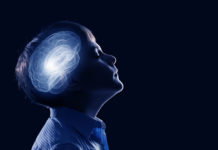In 2011 the American Academy of Pediatrics (AAP) issued guidelines recommending therapy over stimulant drugs as the primary treatment for children diagnosed with ‘ADHD.’ New research from the CDC reveals, however, that children between ages 2 and five are still prescribed medications before receiving the recommended therapy or psychological services. Overall, the researchers found that 75% were being prescribed “ADHD’ drugs while no more than 55% received psychological treatments. Incredibly, among those on private insurances, the percentage of children receiving psychological services for ‘ADHD’ showed no increase following the 2011 recommendations.

Past studies estimate that approximately one-third of all children given stimulant drugs for ‘ADHD’ experience adverse events, including behavioral side effects like irritability, outbursts, social withdrawal and even a lack of alertness. Children also show decreased growth rates while on these medications and can develop reduced appetites and sleep problems.
Also, for those under five years of age, meta-analyses have demonstrated that there is more high-quality evidence for the effectiveness of therapy for ‘ADHD’ than there is for the use of drugs. As a result, the AAP has recommended that behavior therapy is used as the first-line treatment for children. Recent research has also found that children with ‘ADHD’ symptoms improve faster through therapy than they do on drugs and that these interventions also are less expensive over the long-run, further strengthening these initial recommendations.
To compare these guidelines with treatment practices, the CDC examined data from both Medicaid and Truven Health, which tracks employee-sponsored insurance (ESI) claims. They found that only about half of all children diagnosed with ‘ADHD’ received the recommended first-line therapy while three-fourths received prescriptions for stimulant medications. The researchers reported no increase in the use of therapy after the 2011 guidelines. There was also no decrease in the use of stimulant drugs in these populations.
They conclude:
“To effectively mitigate impairments associated with ADHD and minimize risks associated with ADHD medications, it is important to increase the percentage of young children with ADHD who receive evidence-based psychological services, especially parent training in behavior therapy.”
****
Visser SN, Danielson ML, Wolraich ML, et al. Vital Signs: National and State-Specific Patterns of Attention Deficit/Hyperactivity Disorder Treatment Among Insured Children Aged 2–5 Years — United States, 2008–2014. MMWR Morb Mortal Wkly Rep 2016;65:443–450. DOI: http://dx.doi.org/10.15585/mmwr.mm6517e1. (Full Text)















Gee, oh gee, why does this not surprise me? The scientific evidence is right there staring everyone in the face and parents continue to go along with the drugging of their children even when the evidence shows that there are detrimental results to the lives of their children. And the damned psychiatrists keep on prescribing what amounts to speed to children, regardless of the real science showing immense problems with doing so. And Americans continue to swallow, hook line and sinker, the idea that there is something real known as ADHD. Why are we, as a nation, refusing to see the reality of what is? It’s the most amazing thing I’ve ever witnessed in my entire 68 years of existence. And with every day that goes by more children are prescribed speed. We put people in prison for buying and using speed on the streets and yet turn around and allow psychiatrists to prescribe it to our children. What is wrong with this picture????????
Report comment
It is truly heartbreaking, I agree Stephen. And I used to believe doctors were intelligent and ethical, how wrong could I be? And the article doesn’t even mention the stimulants can cause psychosis, which gets labeled as “bipolar” or “schizophrenia.” And that this country has a huge number of children DSM-IV-TR misdiagnosed as “bipolar,” due to the ADRs of the stimulants and antidepressants.
I’m thinking about going back to school for family therapy, in the hopes of helping to stop this insane maltreatment of children. Don’t know if I’ll make much difference, but I’ll try. The problem is the status quo is so very profitable, albeit morally repugnant.
Report comment
I guess the trend might reverse if a group organises some kind of office invasions of clinics, pharmacies etc
Report comment
They are forgetting another long-term study on human behavior: that which people make more money on with less labor or discomfort involved will be repeated more frequently, regardless of the actual effectiveness of that behavior. Thinking that docs are prescribing ADHD drugs because they actually know the research data and think it’s the right choice is naive. Most do it because it’s quick, cheap, and lets the adults off the hook for doing any hard work. Add to that the fact that some insurance companies don’t pay out for “ADHD” treatment unless you have the kid on a prescription, and you’ve got a formula for ignoring what is actually needed for the kid in favor of what improves prestige, control and income for the adults involved.
— Steve
Report comment
Don’t expect prescribing to decrease now that there’s chewable Adderall on the market; and journalists and MD/mothers shilling for it:
http://www.thedailybeast.com/articles/2016/05/28/kiddie-adderall-could-actually-be-a-lifesaver-for-parents-and-children.html
Liz Sydney
Report comment
A recommendation is not an order. This news doesn’t surprise me at all. I’ve been reading it for years. Turn the page, it’s always the same. There is no power overseeing the “mental health” profession.
Report comment